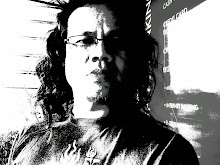- Hueiyen Lanpao Editorial :: December 20, 2011 -
Among all these, the Manipuri polo or Sagol Kangjei, or a form of hockey played on horseback occupies a pride of place. For, from this form of game, originated the modern polo.
Though there are various other games which is played on horseback which is akin to polo and which were played in other parts of the globe, it is now accepted without dispute that the modern form of polo evolved out of the Sagol Kangjei, with the Britishers giving the final shape in terms of formulating the rules and regulations which govern the modern game of polo.
One of the most essential prerequisite of this game is the availability or accessibility of horses. Manipur is most fortunate in that sense, as in this land also inhabit the Manipuri pony.
The Manipuri Pony has been an inalienable part of the people's life and fortune since time immemorial, starting from the creation of universe as per the mythology of the land.
In later period, the Manipuri pony besides forming an essential part of the rites and rituals of the land, like in Lai-Haraoba, it also played an important part in transportation of man and material.
In the many campaigns and wars waged by the erstwhile kings of Manipur, the Manipuri pony contributed greatly as the mount of the Manipuri cavalry which made a name for itself as a formidable fighting machine of a bygone era.
But it was in the play ground of Mapal Kangjibung that the Manipuri pony resounding announcement of its existence to the world through the game called Sagol Kangjei. The training and conditioning gained as the mount of the Manipuri cavalry in years of campaigns were transferred to the playing field, making it fiercely competitive.
In the olden days it is said that ponies were reared in a semi-wild fashion, letting them roam free and eat their fill in vast tracks of grazing field common during those days.
The owner only bringing them to the stable when there arise a need for Lai Haraoba, transportation, polo games or even warfare and setting them free yet again after the completion of the specific they were brought.
The grazing fields have disappeared today; people are no longer dependent on the Manipuri pony for transportation or war though they are continued to be used for ceremonial purposes in Lai Haraoba and for polo playing.
All these factors have come together to threaten the very existence of this majestic animal, which is known for its endurance and agility among all the other species of pony in the world.
According to the Indian Council of Agricultural Research (ICAR), it is "one of the purest breed of equines of india" and it also happens to be the only recorded and living original polo pony of the world.
The population of this pride of Manipuri is decreasing alarmingly, as per the livestock census, 2007, the population of the Manipur pony breed has declined to 1218(Livestock Census, 2007) against the 1893 ponies as per the Livestock Census, 2003 .
This should wake up all those who are interested in preserving this majestic animal which has served this land through centuries and which has brought name to Manipur to do their bid.
There is a need to set up breeding and rearing centres of the Manipuri pony where the All Manipur Horse Riding, Polo Association All Manipur Polo Association and the Veterinary Department should pool in their collective resources and expertise.
The individuals and business enterprises should also come forward and contribute their mite towards this venture.
Let's save the Manipur Pony from becoming extinct.

No comments:
Post a Comment